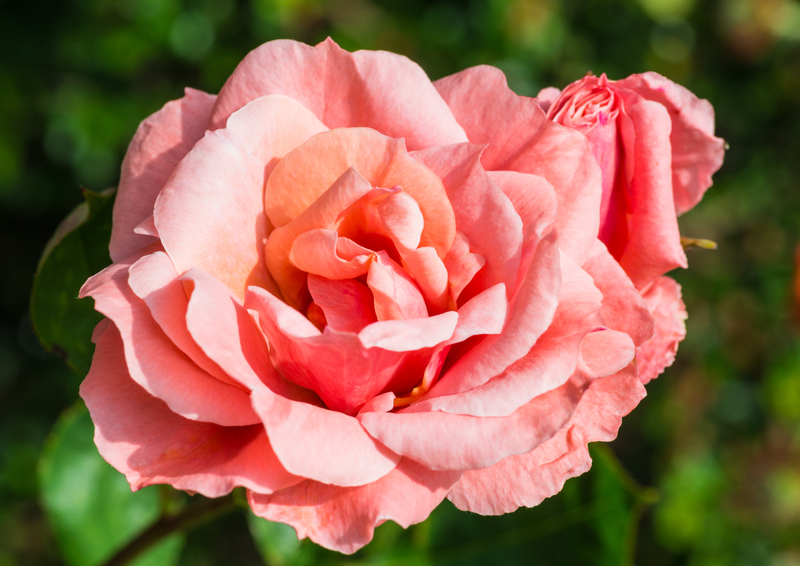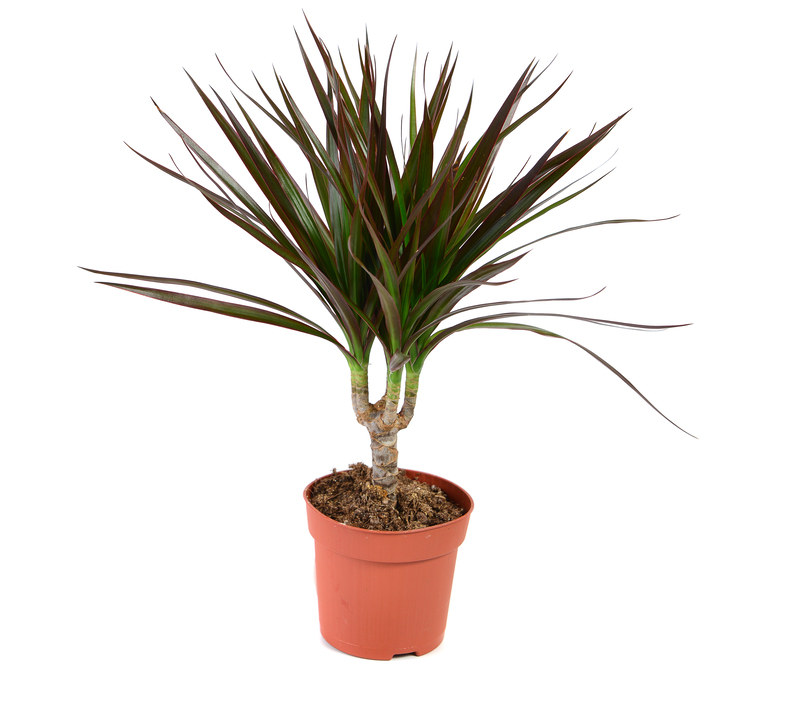9 Gardener's Tips for Transforming Your Outdoor Space
Posted on 20/06/2025
9 Gardener's Tips for Transforming Your Outdoor Space
Dreaming of a lush backyard retreat, colorful flower beds, or a productive vegetable patch? Transforming your outdoor area into a beautiful sanctuary may seem challenging, but with the right gardening strategies, anyone can do it! Whether you're a newbie gardener or a seasoned green thumb, these nine expert tips will help you elevate your outdoor space and create a thriving, inviting environment.

Table of Contents
- Assess Your Outdoor Space
- Plan with Purpose
- Prioritize Soil Health
- Choose the Right Plants
- Embrace Layering and Structural Planting
- Water Wisely
- Incorporate Hardscape Elements
- Encourage Wildlife and Pollinators
- Practice Ongoing Maintenance
1. Assess Your Outdoor Space
Before you start transforming your outdoor space, take a step back and observe what you have. Walk around your yard or garden and take notes about:
- Light Patterns: Where does the sun shine at different times of the day?
- Soil Quality: Is it sandy, clay-heavy, or loamy?
- Wind Exposure: Are there breezy spots or sheltered areas?
- Shape and Layout: Are there steep slopes, flat areas, or existing features like trees and fences?
Understanding these basic conditions will help you make the right plant selections and design choices, ensuring long-term gardening success in your outdoor living area.
2. Plan with Purpose
Every transformative garden project begins with a vision. Think about how you want to use your space:
- A quiet retreat for relaxation?
- A vibrant hub for entertaining and outdoor dining?
- An edible garden full of herbs and vegetables?
Sketch your ideas on paper or use a garden planner tool. Consider color schemes, seasonal interest, and functional zones--like sunny places for lounging, shaded areas for rest, and open spaces for kids or pets. Mapping things out helps prevent overcrowding and ensures every corner of your garden has a purpose.
3. Prioritize Soil Health
Healthy soil is the literal and figurative foundation of a thriving outdoor garden. Begin by conducting a simple soil test to check pH and nutrient levels. Amend your soil with organic compost, well-rotted manure, or leaf mold to enhance fertility.
- Aerate compacted soil to improve water penetration and root growth.
- Avoid excessive tilling, which can damage soil structure and beneficial organisms.
- Mulch garden beds to suppress weeds, retain moisture, and add slow-release nutrients.
Remember, rich, well-draining earth supports stronger, more resilient plants--all essential for a transformed, sustainable garden.
4. Choose the Right Plants for Your Garden
Selecting suitable plants is critical for transforming your outdoor area into a beautiful and low-maintenance oasis. Consider:
- Climate: Pick plants adapted to your local weather patterns and hardiness zone.
- Light Requirements: Group sun-lovers and shade-lovers separately.
- Size and Growth Habit: Prevent overcrowding and excessive trimming by choosing varieties that fit your available space.
- Native and Pollinator-Friendly Species: Native plants thrive with minimal care and support local wildlife.
An intentional plant selection improves biodiversity and guarantees vibrant, ever-changing displays throughout the year. Transforming your backyard garden starts with these smart choices.
5. Embrace Layering and Structural Planting
Professional gardeners achieve visual interest by working with layers and texture. Layered planting involves arranging plants in tiers:
- Background: Tall trees or shrubs for height and privacy
- Midground: Mounding perennials and ornamental grasses
- Foreground: Low-growing flowers, groundcovers, or herbs
Mix evergreen and deciduous species for year-round appeal and contrast. Additionally, include unique focal points--like a sculptural tree, a water feature, or a colorful bench--to draw the eye and add personality to your garden landscape.
6. Water Wisely and Efficiently
One of the most important gardener's tips for outdoor transformation is smart watering. Follow these guidelines to keep your garden healthy while conserving resources:
- Water Early: Irrigate in the morning to reduce evaporation and prevent mildew.
- Deep, Infrequent Watering: Soak roots rather than giving frequent, shallow sprinkles.
- Install Drip Irrigation: Save water and minimize leaf wetness, which can cause disease.
- Mulch: Retain ground moisture to reduce how often you water.
Remember, overwatering can be as harmful as underwatering! Track rainfall and adjust your watering schedule as needed.
7. Incorporate Hardscape Elements
No outdoor space transformation is complete without hardscape features. These permanent or semi-permanent elements give structure to your garden, define spaces, and add functional beauty. Consider adding:
- Pathways: Stepping stones, gravel trails, or pavers for easy navigation
- Patios and Seating Areas: Create intimate spots for relaxation or gatherings
- Raised Beds: Boost accessibility and offer attractive planting options
- Garden Edging: Keep borders tidy with bricks, timber, or metal strips
- Water Features: Fountains, ponds, or birdbaths provide soothing sounds and attract wildlife
The contrast between living plants and man-made structures brings harmony and elegance to any garden upgrade project.
8. Encourage Wildlife and Pollinators
Bringing biodiversity into your garden transformation not only improves ecological balance but also adds movement, sound, and color. Here's how to create a haven for butterflies, bees, birds, and other beneficial creatures:
- Grow Pollinator-Plants: Choose native wildflowers, lavender, and herbs
- Provide Water: Small ponds or shallow dishes for birds and insects
- Install Bird Feeders and Houses: Support avian visitors year-round
- Leave Wild Spaces: A corner of unmown grass or a log pile for shelter
A wildlife-friendly garden is self-sustaining, more resistant to pests, and endlessly fascinating to watch.
9. Practice Ongoing Garden Maintenance
Successful outdoor space makeovers require ongoing attention--don't let all your hard work go to waste! Keep your transformed garden in top shape by:
- Regular Weeding: Remove unwanted plants before they take over
- Pruning: Shape shrubs and trees for vigor and beauty
- Pest and Disease Checks: Inspect leaves and stems, act promptly if problems arise
- Seasonal Planting: Refresh annuals and bulbs for continuous color
- Feed and Mulch: Boost plant nutrition and suppress weeds as needed
Consistency is key! Make a realistic care schedule--working just a little each week is better than overwhelming cleanups after neglect.
Bonus Tip: Personalize Your Garden Space
It's your garden--so make it reflect your style! Add wind chimes, add a hammock, paint your fence, or set out garden art and ornaments. Light up paths and patios with solar lamps for magical evenings outdoors. Your personal touches will transform your garden from ordinary to extraordinary.
Conclusion: Your Outdoor Transformation Journey Begins
Transforming your outdoor space doesn't require a massive budget or a degree in horticulture--just thoughtful planning, perseverance, and a bit of creativity. Start with these 9 gardener's tips and watch as your yard evolves into a stunning sanctuary you'll enjoy year-round.
Are you ready to dig in? Follow these expert gardening tips, and turn your backyard, patio, or garden into the oasis you've always imagined. Happy gardening!

Frequently Asked Questions about Garden Transformation
How do I start transforming my outdoor space?
Start by assessing your current garden conditions, decide what you want to achieve, and then make a clear plan. Choose plants that thrive in your conditions, improve the soil, and incorporate both soft (plants) and hardscape (paths, patios) elements for balance and function.
What are the best plants for beginners?
No-fuss, hardy plants like lavender, echinacea, marigolds, and hostas are great for most gardens. Stick to native species and ones well-suited to your climate for best results.
How do I keep my garden low-maintenance?
Choose drought-tolerant and disease-resistant plants, mulch extensively, and invest in an efficient irrigation system. Group plants by water needs and let some areas grow wild for both low effort and high wildlife value.
How can I make a small backyard feel bigger?
Use vertical planting, mirrors, narrow pathways, and light colors to create an illusion of space. Don't overcrowd - less is often more in compact gardens.
Ready to Transform Your Outdoor Space?
With these 9 gardener's tips, your outdoor space transformation is within reach. Whether you aspire to create a tranquil escape or a buzzing social hub, it all starts with a plan--and the willingness to get your hands dirty!
Start today and enjoy the many rewards of your newly transformed garden space. For more expert gardening advice and inspiration, explore our garden guides and join our gardening community!

